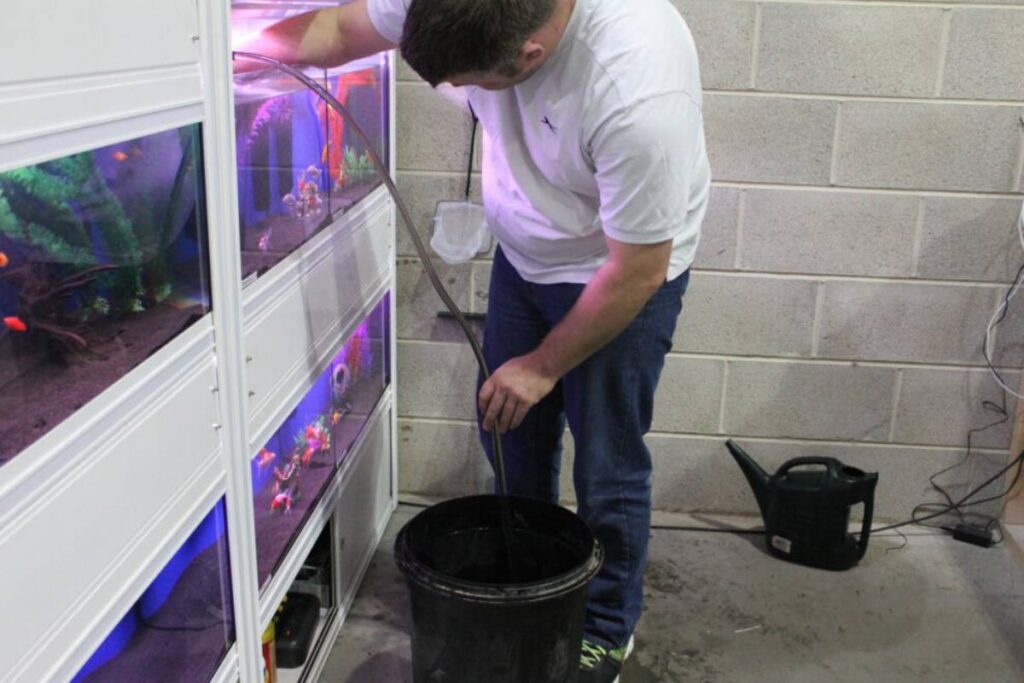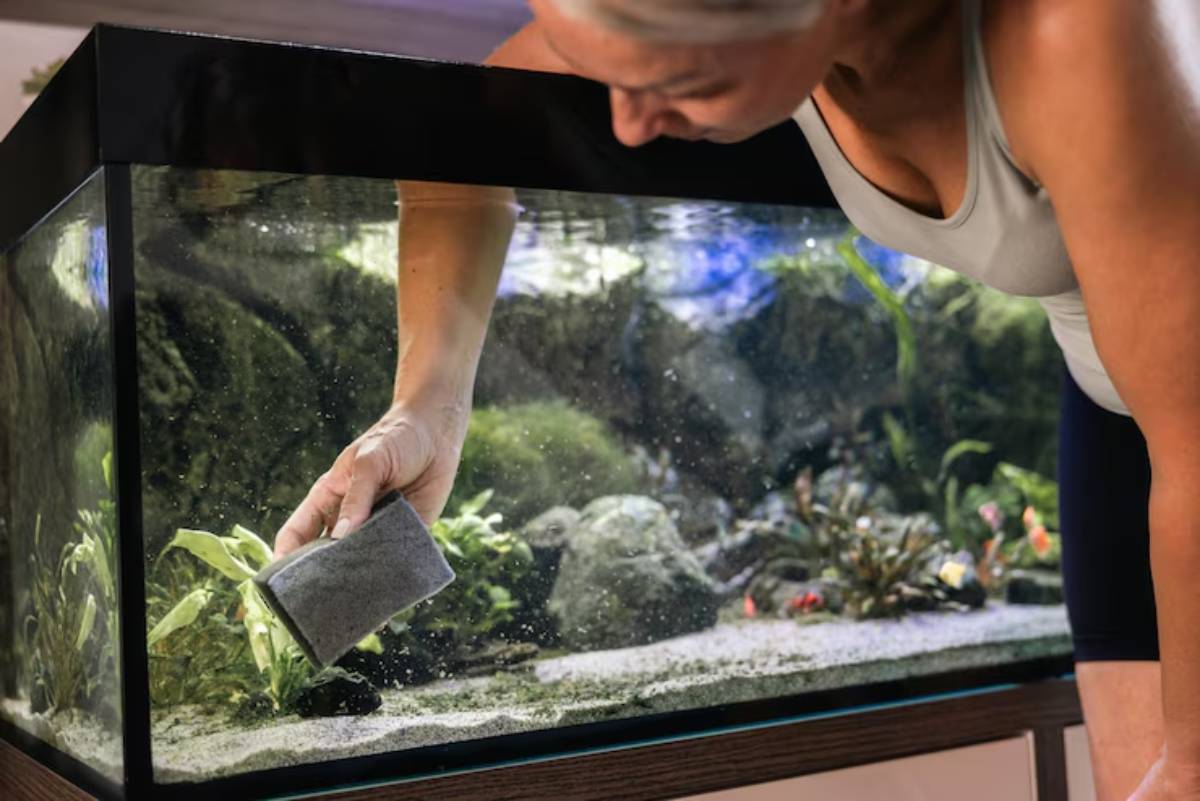The Pets Care Blog

How to Perform a Safe Partial Water Change: Keep Your Tank Clean Without Stressing Your Fish
Aquarium water looks crystal clear — but don’t let appearances fool you. Beneath the surface, waste is accumulating, nutrients are shifting, and the chemical balance is changing. That’s why partial water changes are one of the most important tasks in your aquarium care routine.
Done correctly, a fish tank water change removes harmful toxins, replenishes essential minerals, and keeps your aquatic pets thriving. But if rushed or done incorrectly, it can cause temperature shock, pH swings, or stress that leaves your fish vulnerable to illness.
This guide breaks down how to perform a safe water replacement step by step, helping you preserve the health of your tank without disrupting its ecosystem. Whether you’re a beginner or seasoned aquarist, this advice ensures every drop makes a positive difference.
Why Partial Water Changes Matter
Aquariums are closed systems. Over time, waste products like ammonia and nitrate accumulate — even with filters running 24/7. The only effective way to dilute and remove these by-products is by replacing a portion of the water.
Key Benefits of Regular Water Changes:
- Removes excess nitrate and phosphate
- Replenishes trace minerals essential for fish and plants
- Helps control algae growth
- Supports stable pH and water hardness
- Reduces disease risk and fish stress
Skipping this step for too long leads to cloudy water, foul odours, stressed fish — or worse.
How Much Water Should You Change?
The golden rule: never change all the water at once. A partial water change means replacing 10–30% of the tank volume, depending on tank size, stocking levels, and species.
Weekly or Biweekly Recommendations:
- Lightly stocked tanks: 10–15% weekly
- Moderately stocked: 20–25% weekly
- Heavily stocked tanks: up to 30% weekly or every 5 days
- Nano tanks: smaller volume means more frequent small changes
Keep your tank’s needs in mind, and stay consistent.
Tools You’ll Need for a Safe Water Change
Investing in a few aquarium-specific tools makes this process smooth, safe, and mess-free.
Safe Water Change Essentials:
- Gravel vacuum or siphon
- Dedicated aquarium bucket
- Dechlorinator or water conditioner
- Aquarium-safe thermometer
- Algae scraper (optional)
- Clean cloth or towel for spills
Never use household cleaning tools or soap near your aquarium setup.
Preparing for a Safe Water Change
Before you start draining, there’s a bit of prep work to ensure safe water replacement.
1: Condition the Replacement Water
Tap water often contains chlorine or chloramine, both toxic to fish.
- Use a reliable dechlorinator
- Match the temperature of the new water to your tank (±1–2°C)
- Let it sit for 15–30 minutes if needed
- Test for pH and GH/KH if you’re maintaining sensitive species
2: Turn Off Electrical Equipment
Power off the heater, filter, and lighting. This prevents damage from running dry or temperature spikes.
How to Perform the Partial Water Change
With prep complete, here’s how to change your aquarium water safely and efficiently.
1. Start Siphoning with a Gravel Vacuum
Begin by vacuuming the substrate — this removes uneaten food, fish waste, and decaying matter.
- Move the siphon slowly to avoid stirring debris
- Cover different areas each week
- For sand, hover just above the surface without disturbing it
2. Remove 10–30% of the Water
Once your gravel is clean, remove the desired water volume using the siphon or pouring method.
- Use a marked bucket to measure accurately
- Keep the removed water for rinsing the filter media if needed
3. Inspect the Tank During the Process
While the water is lowered, it’s a great time to:

- Wipe the inner glass with an algae pad
- Remove floating debris
- Trim or inspect plants
- Observe fish behaviour for signs of stress
For more on regular cleaning without harming your setup, see safe cleaning tools for fish tanks.
Adding the New Water Safely
This is where things can go wrong if rushed — always add water gradually.
Safe Addition Steps:
- Slowly pour or siphon the new water into the tank
- Pour against a plate or plastic bag to avoid disturbing the substrate
- Check the temperature as you go
- Reconnect and power up your filter and heater once levels are restored
Watch your fish closely — if they dart, gasp, or hide more than usual, pause and reassess.
Common Mistakes to Avoid
Even experienced aquarists can slip up. Here’s what to steer clear of.
- Using unconditioned tap water
- Changing too much water at once
- Drastic temperature differences
- Stirring the substrate too aggressively
- Cleaning filter media and changing water on the same day
Rinse the filter sponge on alternate weeks to preserve beneficial bacteria.
Special Considerations by Tank Type
Planted Tanks:
- Keep changes smaller (10–20%) to avoid CO₂ and nutrient swings
- Avoid vacuuming around rooted plants too often
Nano and Betta Tanks:
- Change smaller amounts (15–25%) more frequently
- Use drip methods if needed to prevent rapid parameter shifts
Saltwater Tanks:

- Match salinity, temperature, and pH exactly
- Pre-mix saltwater at least 24 hours ahead
- Use a refractometer to confirm salinity before adding
How Often Should You Perform Water Changes?
Frequency depends on how “busy” your tank is — meaning the number of fish, type of filtration, and presence of live plants.
- Weekly is ideal for most tanks
- Twice-weekly for overstocked or bare-bottom tanks
- Every 10–14 days, if your tank is low on waste with strong filtration
Log your routine with dates, volumes changed, and parameter notes. This helps you fine-tune your schedule over time.
Log your routine with dates, volumes changed, and parameter notes — or use this weekly aquarium maintenance checklist to stay consistent.
How to Tell if Your Fish Are Stressed During a Water Change
Fish are sensitive to changes in the environment, including water parameters. Keep an eye out for:
- Gasping at the surface
- Erratic swimming
- Clamped fins
- Hiding or colour loss
If you see any of these signs, slow down, test the water, and adjust accordingly. In mild cases, fish will recover quickly once balance is restored.
Conclusion: Clean Water, Calm Fish, Confident You
Changing aquarium water might sound simple — and it is — but doing it safely takes awareness and care. A rushed or careless change can do more harm than good, while a well-executed one keeps your ecosystem thriving.
By mastering this safe water replacement routine, you’re doing more than just cleaning — you’re supporting every breath your fish take, every plant root, and every microscopic helper in your tank.
Make it a habit, not a hassle. Your fish will reward you with vibrant colours, playful behaviour, and fewer health issues — all thanks to a clean, stable home.









